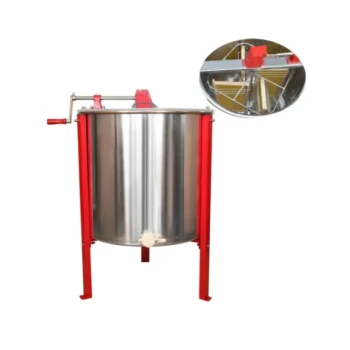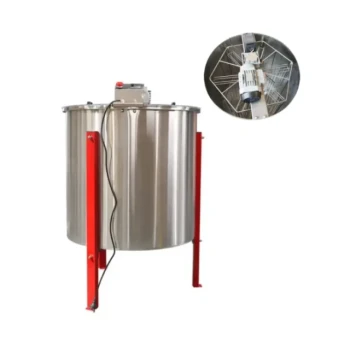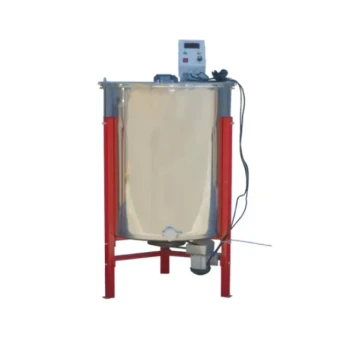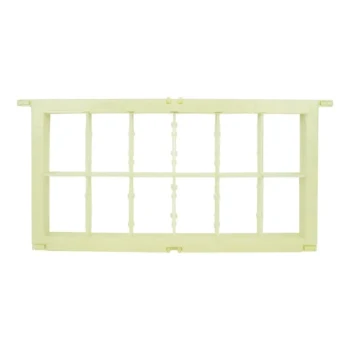Yes, it does. Heating honey to a specific temperature is precisely what pasteurization is. This industrial process is designed to kill naturally occurring yeast cells and is typically done by heating the honey to around 145-160°F (63-71°C) before rapidly cooling it.
The core issue is not simply whether heating pasteurizes honey, but understanding the fundamental trade-off this process creates: pasteurization provides stability and a longer shelf life at the direct cost of degrading the natural enzymes and beneficial compounds that define raw honey.
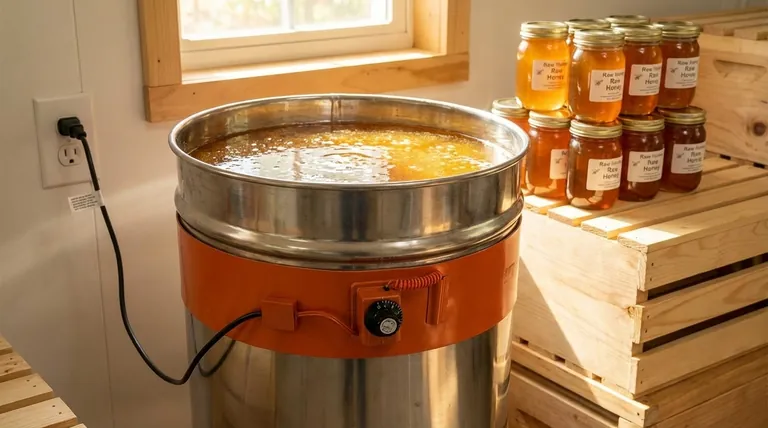
What Pasteurization Actually Does to Honey
Pasteurization is a controlled process with specific commercial goals. It fundamentally alters the honey from its raw state to create a more uniform and stable shelf product.
The Primary Goal: Killing Yeast
The main purpose of pasteurization is to destroy osmophilic yeasts. These are sugar-tolerant yeasts that can cause honey, especially honey with a higher moisture content, to ferment and spoil over time.
By heating the honey to a temperature like 160°F (71°C), processors ensure these microorganisms are eliminated, dramatically extending the product's shelf life.
The Secondary Effect: Preventing Crystallization
Heating also serves another commercial purpose: it dissolves the microscopic sugar crystals that are naturally present in honey.
This process significantly slows down the rate of crystallization, keeping the honey in a clear, liquid state for much longer on the store shelf. Most consumers visually associate liquid honey with purity, making this a key marketing advantage.
Understanding the Trade-offs: The Cost of Stability
While pasteurization creates a stable product, this stability comes at a significant cost to the honey's natural composition. The heat, while effective at killing yeast, is indiscriminate.
The Loss of Beneficial Enzymes
Raw honey contains natural enzymes, such as diastase and invertase, which are introduced by the bees. These enzymes are sensitive to heat and are denatured—or destroyed—by the temperatures used in pasteurization.
The presence of these enzymes is often used as a key marker for identifying high-quality, raw honey. Their absence in pasteurized honey is a direct result of the heating process.
Reduction in Overall Quality
The high heat also degrades other valuable components. The references note the denaturation of amino acids, and other delicate compounds responsible for the unique aroma and flavor profile of the honey can also be damaged.
Essentially, the process prioritizes microbiological stability and appearance over the preservation of the honey's natural, raw state.
Making the Right Choice for Your Goal
Understanding why honey is pasteurized allows you to select the right product based on your specific needs, not just marketing labels.
- If your primary focus is maximum shelf life and a consistently liquid product: Pasteurized honey is engineered for this purpose and is the most reliable choice.
- If your primary focus is preserving natural enzymes and the full nutritional profile: Raw, unpasteurized honey is the only option, as it has not been subjected to high heat.
- If your primary focus is baking or cooking: The distinction matters less, as you will be heating the honey yourself, which will inevitably denature its heat-sensitive compounds anyway.
Ultimately, choosing your honey depends on whether you prioritize its raw, natural state or the convenience of a processed, stable food product.
Summary Table:
| Aspect | Pasteurized Honey | Raw Honey |
|---|---|---|
| Process | Heated to 145-160°F (63-71°C) | No high-heat processing |
| Shelf Life | Extended (yeast killed) | Shorter (natural fermentation possible) |
| State | Stays liquid longer | Naturally crystallizes |
| Enzymes & Nutrients | Significantly reduced | Preserved |
| Ideal For | Commercial shelf stability, general consumers | Health-conscious markets, raw product enthusiasts |
Equip Your Apiary for Quality Honey Production
Whether your commercial beekeeping operation focuses on raw honey for health markets or pasteurized honey for broad distribution, having the right equipment is fundamental to maintaining quality and efficiency.
HONESTBEE supplies professional-grade beekeeping supplies and equipment—including honey warming cabinets for controlled pasteurization and storage solutions—to commercial apiaries and beekeeping equipment distributors through our wholesale-focused operations. We help you protect your product's integrity while meeting market demands.
Let's discuss your operation's needs: Contact HONESTBEE today to explore our wholesale equipment solutions and optimize your honey processing workflow.
Visual Guide

Related Products
- Silicone Rubber Honey Drum Heating Belt
- 10L Stainless Steel Electric Honey Press Machine
- Electric 8 Frame Honey Spinner Extractor Equipment for Beekeeping
- Inverted Squeezable Honey Jar with No Drip Flip Top Cap for Easy Pouring
- Stainless Steel Manual 8 Frame Radial Honey Extractor Machine for Beehives
People Also Ask
- How does the Bee Blanket compare to traditional heating methods? Preserve Honey Quality with Gentle Heat
- What safety and maintenance tips should be followed when using a honey bucket heater? Ensure Honey Quality and Equipment Longevity
- Why is quality processing equipment important in honey production? Ensure Purity, Efficiency, and Brand Reputation
- Do you have to heat honey before bottling? A Guide to Quality vs. Efficiency
- Can you heat honey to remove moisture? Safely Preserve Honey Quality with Controlled Drying






